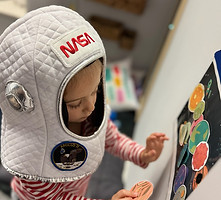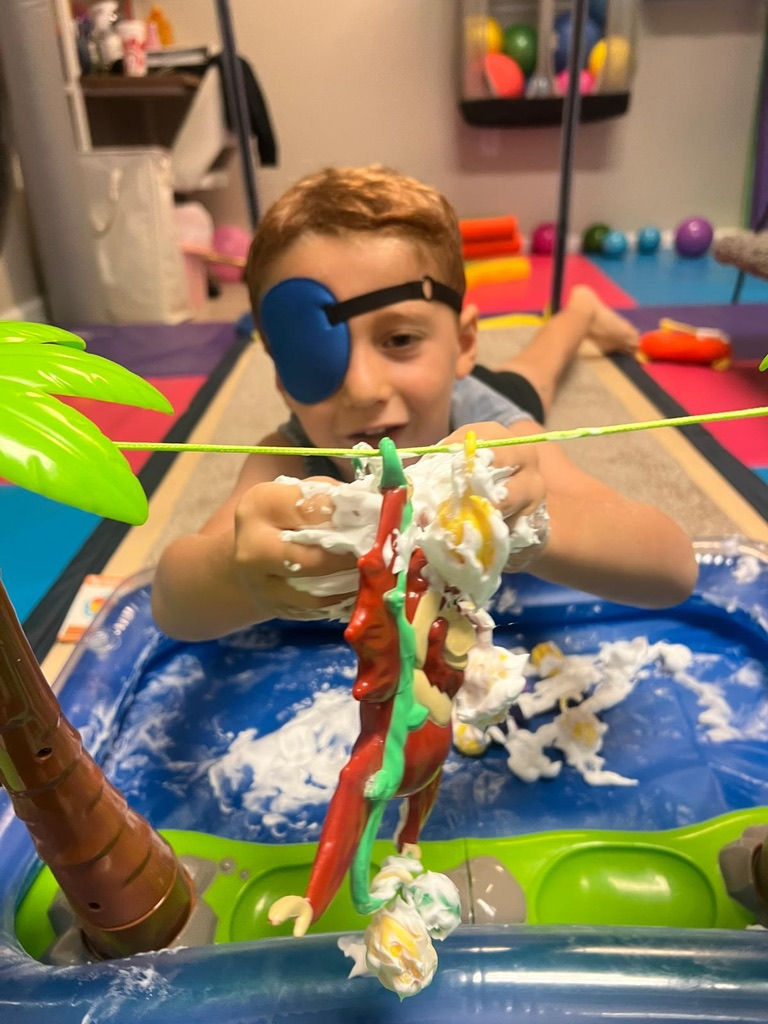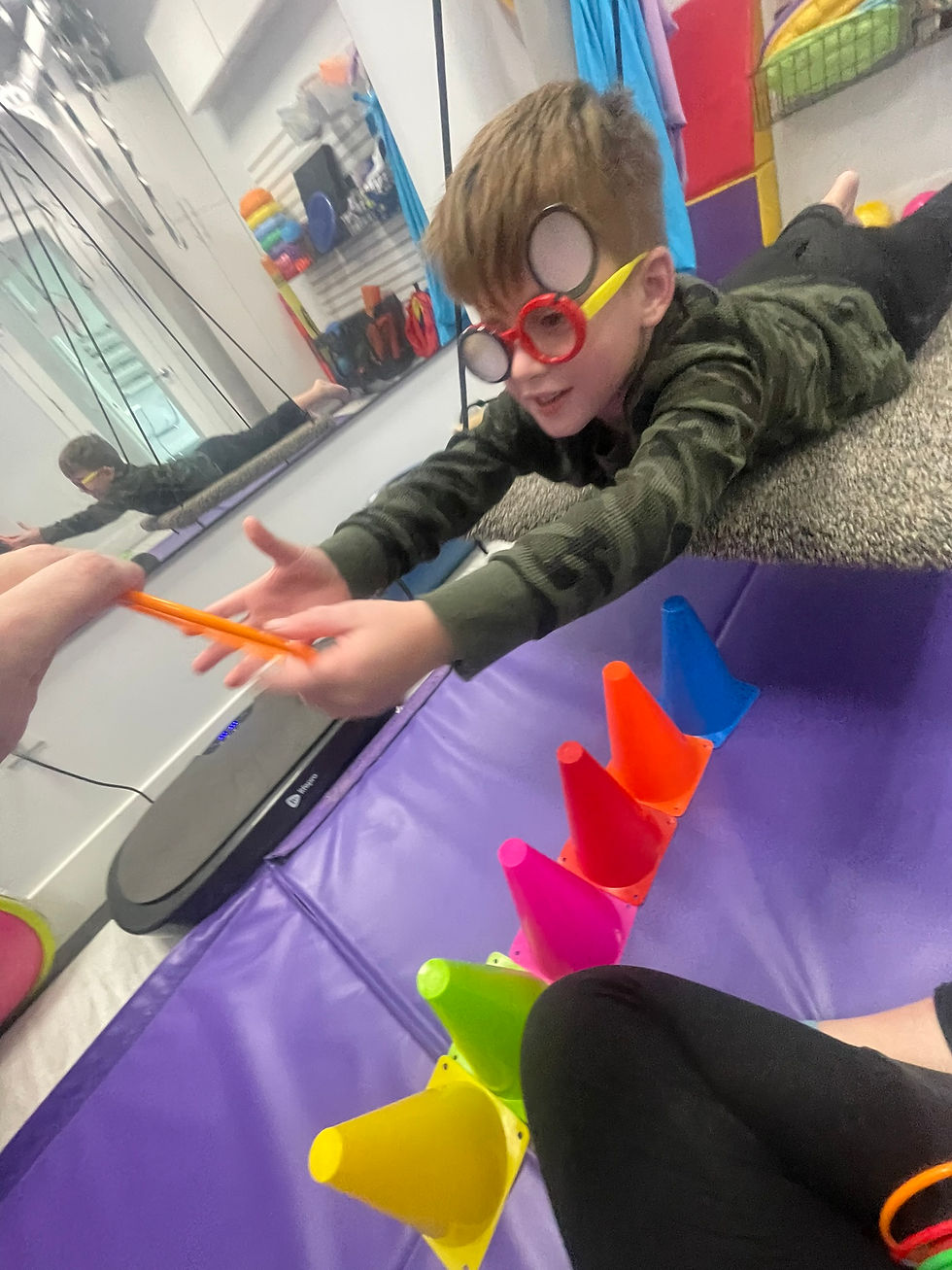
LEARN MORE
WHAT IS OT?

EVIDENCE BASED
Occupational therapy is a science-driven, evidence-based practice that supports children in developing the skills they need to thrive. Our approach combines the latest clinical research with the professional expertise of our therapists and the unique needs of each child. Pediatric occupational therapy helps children improve emotional regulation, build independence, and succeed in everyday activities—at home, in school, and during play.

FAMILY CENTERED
Occupational therapists recognize that families are the heart of a child’s development and well-being. They understand that family members are the best experts on their child and work closely with them to ensure therapy is tailored to the child’s unique needs and the family’s goals. A family-centered approach involves actively listening to families, respecting their insights, and considering their routines, strengths, and challenges. By fostering open communication and collaboration, the therapist creates a supportive and individualized plan that empowers families to be active participants in their child's progress, ensuring that therapy is meaningful, relevant, and integrated into everyday life.

CHILD CENTERED
A child-centered approach in occupational therapy focuses on the child’s unique needs and interests, using play and child-led activities to guide the therapy process. The therapist creates a supportive environment where the child is empowered to explore, engage, and build essential skills in a way that feels natural and enjoyable, ensuring their voice and goals are always at the heart of the journey.
DEVELOPMENTAL HIERARCHY

The Vision and Learning Center
Background
Why do we use body based approaches? Just like you can’t build the roof of a house without a solid foundation, a child’s development requires strong, foundational building blocks in the early years. These critical early experiences shape how a child learns, processes information, and interacts with the world. Often, when a higher-level skill is challenging for a child, it may indicate that a foundational building block is missing or underdeveloped. In the early years, these primary experiences consist of sensory motor experiences as well as deep connective experiences with caregivers . When a child is asked to perform tasks requiring skills such as fine motor, visual perceptual, or academic tasks without having the necessary foundational support, it can lead to frustration, anxiety, and a sense of overwhelm. Or, it can result in a child who has to create compensations in order to be successful requiring extra effort and stress. How exhausting! This lack of a solid foundation often manifests as challenging behaviors and can contribute to difficulties with emotional regulation and mental health. Without addressing these underlying gaps, children may struggle to succeed in tasks, which can further impact their confidence and well-being.
Primitive Reflex Integration
Primitive reflexes are automatic movements that begin in infancy and play a vital role in developing motor skills and coordination. As children grow, these reflexes must integrate through sensory input and transform into purposeful, controlled movements, allowing them to perform tasks like reading, writing, and engaging socially. When reflexes aren't properly integrated, it can impact a child's ability to focus, regulate emotions, and complete daily activities effectively. Reflexes can persist for various reasons, and a comprehensive evaluation is essential in identifying the underlying causes. This thorough assessment helps pinpoint any developmental, neurological, or mental health factors contributing to the persistence of these reflexes, allowing for a more targeted and effective intervention plan.
Sensory System Integration
Sensory Integration is the process by which the brain receives, organizes, and responds to information from the environment through our senses. It is a process that helps mature the brain and develop the physical body. Sensory Processing Disorder (SPD) occurs when there is a disruption in the way the brain processes and responds to sensory input. SPD can affect many aspects of a child’s life, from how they engage in daily activities, to their emotional regulation, social interactions, and learning. Many children experiencing chronic stress or trauma can also benefit from additional sensory input in their daily lives. Sensory activities help regulate the nervous system, reduce anxiety, and promote relaxation, supporting the child’s emotional well-being.
Motor Development
During treatment, as we progress through the developmental hierarchy, we focus on building foundational skills before addressing more advanced areas like motor skills and oculomotor function. Once the child has received the necessary sensory inputs and achieved the foundational support they need, we can then work on strengthening motor coordination and improving eye movement skills to ensure INNATE success in higher-level tasks. Bilateral integration is a key aspect of brain hemisphere communication and plays a vital role in overall regulation. It refers to the brain’s ability to use both sides of the body together in a coordinated way. When a child engages in activities that promote bilateral integration, such as crossing the midline or using both hands and legs in a balanced way, it helps strengthen the communication between the left and right hemispheres of the brain. This communication is crucial for regulating emotions, having attention, and developing visual and motor skills. By improving bilateral integration, children can achieve better self-regulation, enhance their cognitive abilities, and improve coordination, all of which are essential for thriving in everyday life.
BRAIN INTEGRATION

Dr. Ana Perez, PT, DPT & Kathryn Ring, OTR/L
The whole brain works as an integrated system like a network of interconnected highways. Each area of the brain works harmoniously together to support how a child moves, thinks, feels, and interacts with their world. When there’s dysfunction or underdevelopment in one area of the brain, it can cause traffic jams and impact other areas of the brain too. That’s why we believe it’s essential to take a comprehensive, integrative, whole-child approach to development.
Our team provides integrated care that helps identify and remove hidden roadblocks in the brain’s wiring. When we understand how different areas of the brain are communicating and functioning together, we are able to help children build new connections to promote learning, self-regulation, and ability to connect with others, so they can thrive—at home, in school, and beyond.

Dr. Ana Perez, PT, DPT & Kathryn Ring, OTR/L
OCULOMOTOR DYSFUNCTION
Oculomotor dysfunction refers to difficulties with the movement and coordination of the eyes. These challenges can affect a child’s ability to track moving objects, shift their gaze smoothly from one point to another (like from the board to their paper), or maintain steady eye alignment while reading or writing. These eye movement skills are essential for everyday activities—especially in the classroom.
You can’t always see a vision problem. Standard eye exams typically focus on visual acuity—how clearly a child sees letters on a chart—but they don’t usually assess how well the eyes move, work together, or process the world around them. That’s why oculomotor dysfunction often goes undiagnosed, especially in young children.
As visual demands increase in school—like reading, copying from the board, and sitting still for extended periods—these hidden challenges can start to show up. Children may struggle to keep up, avoid tasks that are visually taxing, or begin to exhibit what look like “behaviors,” attention issues, or emotional dysregulation. These can sometimes be mistaken for learning difficulties or mental health concerns, when in fact, the root cause may be a vision-based problem.








